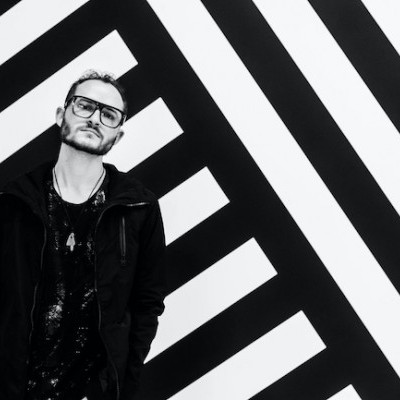Oct 28, 2025 10:47 AM
In Memoriam: Jack DeJohnette, 1942–2025
Jack DeJohnette, a bold and resourceful drummer and NEA Jazz Master who forged a unique vocabulary on the kit over his…

Online recording via asynchronous multi-tracking—long regarded as a convenient, cost-saving option for bands and long-distance musical partners—is rapidly becoming a necessity in today’s pandemic-afflicted world.
(Photo: Courtesy Photos)Great recordings require a high level of cooperation from everyone involved. From initial concept through final release, a successful project will inevitably draw on both creative talent and technical expertise. Those of us who have recorded with ensembles large and small know that organizing a studio session and working out all the logistics can be a time-consuming and costly task—especially if travel is involved.
The need for a better solution and the rise of the internet have served as the sparks that ignited the development of a new breed of high-quality collaborative tools that allow musicians to work together, remotely. Online recording via asynchronous multi-tracking—long regarded as a convenient, cost-saving option for bands and long-distance musical partners—is rapidly becoming a necessity in today’s pandemic-afflicted world.
Remote collaboration first began to take hold with the advent of digital recording. Audio files would be shuttled back and forth between studios via removable media, as standard phone lines did not have the bandwidth to handle large data transfers. High-speed ISDN lines eventually provided studios with a workable collaborative option, but the cost was extremely high, putting such methods out of reach to all but the big production houses.
With the availability of the internet, files could be transferred by anyone via file-sharing apps like Dropbox, but the workflow remained rather cumbersome. Developers sensed the need for better tools that would streamline the remote collaboration process, and innovative solutions are being unveiled seemingly every day, pushing the boundaries of how we make, produce, record and distribute our music.
Even in today’s high-tech digital world, there are still many technical challenges that developers face in creating online audio tools for musicians. First and foremost is connection speed, something that can vary greatly between users and a wildcard factor for software engineers. Most internet users today utilize a wireless Wi-Fi connection, which can also be problematic for sustained high-speed data transfer; a wired ethernet connection is a much more reliable option.
Add to the mix the user’s particular hardware, software and operating system, and you can begin to see the many hurdles that this technology must overcome. As much as everyone would like to be able to multi-track with other musicians remotely in real-time, the reality is that each step of the digital recording process adds latency, and working online can introduce a significant amount. To overcome these and other limitations, there are several common workflow scenarios that developers have begun implementing in their collaboration toolkits. We took a look at a few choice solutions—practical workarounds that musicians can use to create great-sounding online recordings with players and producers in remote places.
Cloud-Based Solutions
Cloud-based solutions utilize a central internet location to store data and/or applications that multiple users can access. Cloud computing is a rapidly rising technology, but for audio applications, connection speed is still a concern, with each developer taking its own approach to minimize the problem. Avid’s Cloud Collaboration, which has been around since 2014, is designed to work with Pro Tools, one of the industry’s most popular digital audio workstation packages. The process begins by creating a “project” in Pro Tools. Projects are saved in the cloud, while “sessions” are local to the user. Special collaboration tools are provided, and you can invite other collaborators to your project with users communicating via a chat window.
Although the project is shared via the cloud, all audio processing is performed and cached locally and uploaded afterward, where it can be downloaded by another user into their local DAW. This solves the latency issue, since all recording data ends up on each user’s local drive. One of the great benefits to this solution is that it works with Avid’s free version of Pro Tools (Pro Tools First).
Soundtrap takes things to the next level by offering an entirely cloud-based DAW that runs in a browser. The software’s easy-to-navigate interface makes it ideal for users just learning the basics of a digital recording package. In this scenario, nothing is local, which allows it to be platform- and device-independent.
Now owned by Spotify, Soundtrap has been widely adopted by educators as a remote teaching tool for audio production and music education. According to Per Emanuelsson, director of Soundtrap at Spotify, “Our goal is to offer a simple-to-use yet powerful product that allows our customers to get to the creative part much faster.” Created with collaboration in mind, Soundtrap has attracted quite a large customer base by offering a basic service for free along with several levels of paid subscriptions. To enhance collaboration, there are also video and audio chat capabilities built right in. Although users can listen in real-time and record individual tracks into Soundtrap, live multi-tracking is not yet 100 percent practical.
Peer-To-Peer Solutions
Sessionwire, which hit the scene in 2018, is a true “peer-to-peer solution” that runs on Mac; a Windows version is in the works. The package consists of the Sessionwire Studio app and drivers that you load onto your computer. Sessionwire utilizes the Mac’s core audio, so it’s compatible with any audio app that supports that. You can also collaborate with other users running different DAW packages.
To get up and running, you select the Sessionwire drivers for input and output in your software and the Studio app runs in a separate window on top of your DAW window—providing the ability to connect to remote users and also maintain audio and video chatting. Audio can be streamed in real time between users for listening purposes, but to work collaboratively on a project, the files need to be transferred directly between computers via simple drag-and-drop. Once the files are residing locally, latency is a no longer an issue, and connection speed and reliability, although a factor in transfer speed, will not impact the actual recording and editing process.
Another benefit of the peer-to-peer workflow is that with no server involved, the connection between users is totally secure. Robin Leboe, Sessionwire’s founder, informs us that Sessionwire is truly an all-in-one software independent solution that provides not only useful tools but also a community of likeminded users through its website. “Sessionwire is a part of this new paradigm of remote recording, and we want to create the illusion of being on the other side of the studio glass,” Leboe said.
Audio Streaming Solutions
Audiomovers ListenTo audio plug-in is capable of streaming live audio between remote users. It claims to be the only solution that actually streams high-quality uncompressed audio. Available in VST, AU and AAX formats, ListenTo is compatible with most major DAW packages on both Windows and Mac.
The plug-in is placed in your channel’s signal path, and there are two separate components: send and receive. You can select your stream quality from several compressed formats or full-resolution PCM lossless if your connection speed can handle it. Audio can be streamed directly between DAWs or to a web browser for remote listening.
As a streaming solution there are latency issues, and Audiomovers allows you to adjust your latency up to 2 full seconds. Also keep in mind that if you are playing along with an incoming audio stream, since there is latency introduced into what you are hearing, your file will be offset from the original track when it is streamed back to the other user, so it will need to be time-synced or “lined up.” Since it’s a plug-in, Audiomovers contains no video or audio communication functions, so a third-party application such as Zoom or FaceTime might be needed. According to Igor Maxymenko, co-founder of Audiomovers, “Our solution is completely nonintrusive to the user’s setup, and it works exactly like an audio cable.”
Remote, asynchronous audio collaboration is on the rise and here to stay. With a decent internet connection, we now have the means to work with artists from around the world. There are still technical challenges to overcome, but if you’re based in North America and want to feature an amazing bass player from Sweden or a brilliant saxophonist from Australia on your next recording project, a solution is easily within reach. DB
This story originally was published in the November 2020 issue of DownBeat. Subscribe here.

Jack DeJohnette boasted a musical resume that was as long as it was fearsome.
Oct 28, 2025 10:47 AM
Jack DeJohnette, a bold and resourceful drummer and NEA Jazz Master who forged a unique vocabulary on the kit over his…

“I’ve told students, ‘I don’t mind if you use AI for this or that project,’” says MIT’s Pascal Le Boeuf. “‘But you need to tell me.’”
Sep 18, 2025 11:14 AM
A standard joke when it comes to discussing artificial intelligence, or AI, is that it’s developing so rapidly that…

Chuck Manning Works for NASA … and plays jazz.
Sep 18, 2025 11:23 AM
Congratulations! After years of study, you’ve earned your degree in jazz performance. But let’s face it: Making a…

Always a sharp dresser, Farnsworth wears a pocket square given to him by trumpeter Art Farmer. “You need to look good if you want to hang around me,” Farmer told him.
Sep 23, 2025 11:12 AM
When he was 12 years old, the hard-swinging veteran drummer Joe Farnsworth had a fateful encounter with his idol Max…

“Make time and energy to meet people and make friends,” suggests Millie Ahearn, a student at DePaul University.
Sep 18, 2025 11:32 AM
For many students, the transition into a collegiate jazz program can feel overwhelming — new peers, unfamiliar…